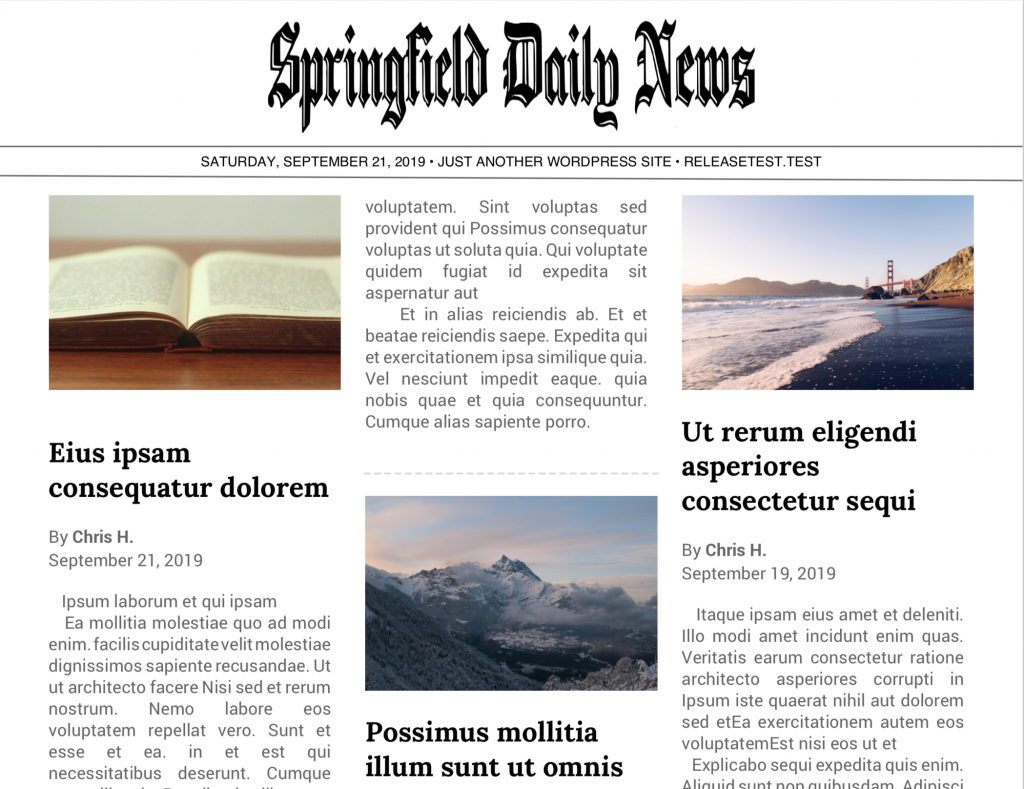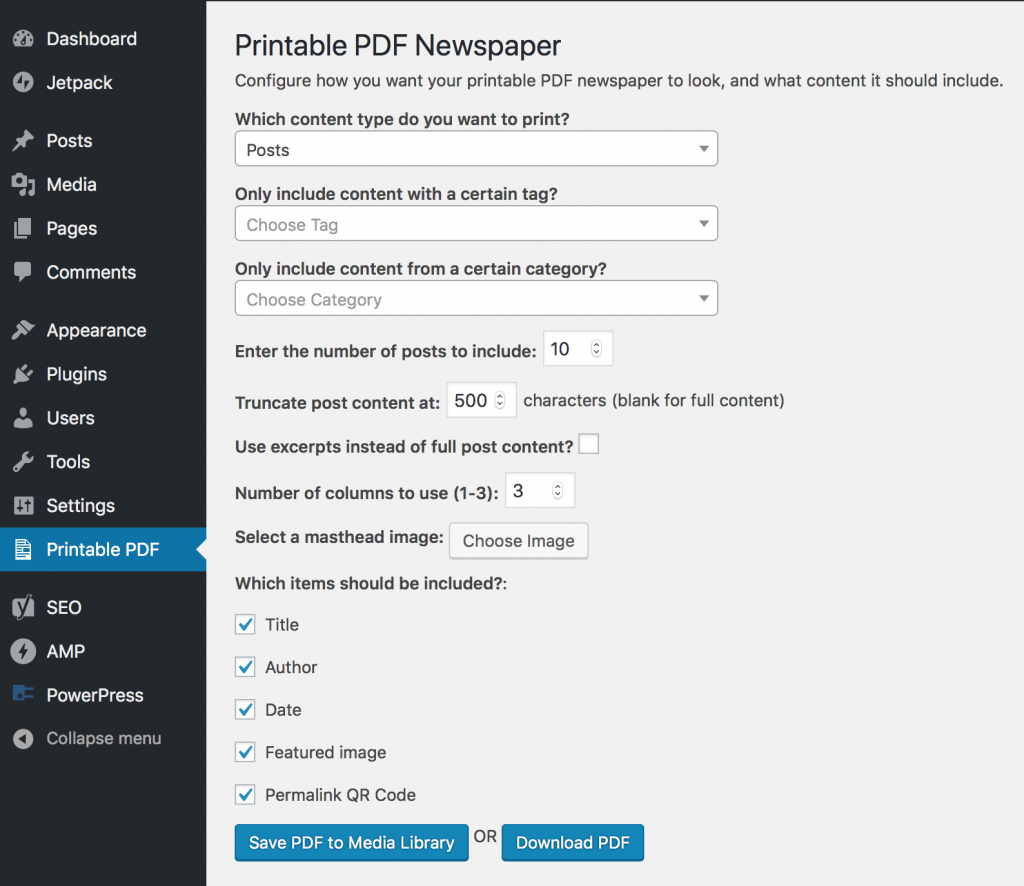I've released a new WordPress plugin I've been working on for a while, "Printable PDF Newspaper."
The plugin does one thing: it generates a newspaper-style PDF document from the posts on your WordPress site.

Pick which posts you want to include, customize a few things about how they're displayed, decide which fields to display (including a QR code that links a print reader with a smartphone back to your site), and generate the PDF. You can download it for printing or save it to your media library for easy linking and sharing.

That's it. That's the plugin.
There have been other plugins that do this kind of thing, but they were usually either reliant on a third-party PDF generation service, some of which required subscriptions, or they hadn't been updated in quite a long time so the architecture was out of date. Some allow you to generate a printable version of your website, but without the focus on a newspaper-style format.
So why would you want to generate a printed thing from your online site content?
Maybe you're producing a newsletter for your campus, neighborhood or community, and you want to take the information you've already published online and hang it up on a message board. Maybe you're a small news organization that wants to tease would-be subscribers at the local diner about what you have to offer. Maybe you just want to have something to look at over your own coffee in the morning. Whatever it is, some people still enjoy encountering things and ideas through engagement with objects in the physical world, and I hope this tool helps facilitate that for WordPress publishers of all sorts.
I've been thinking about the concept for this plugin for over a year, maybe more. I hadn't made time to actually work on building it, so I assumed the idea would just fade away. When it didn't and I still found myself really wanting to see this thing in the world, I contracted out the building of a first rough version, and then spent some time reworking it to my liking. It has rough edges and there are plenty of things it could do better, but I'm proud of it as a version 1.0.
The Printable PDF Newspaper plugin is available for free on the WordPress.org Theme Directory, and the source is available on GitHub.
Features I hope to add in the future as my personal time allows include:
- Saving of PDF configuration selections for easy re-use in future runs
- More customizable header size and layout
- Better support for additional formatting, fonts and styles
- Filters to alter how content is selected and laid out
- Generate QR Codes within the plugin instead of using the Google Chart API
- Ability to auto-generate the PDF on a schedule
- Better controls for limiting number of pages generated and controlling column breaks.
If you're a WordPress publisher and you get to try this out, I'd appreciate any feedback. Enjoy!

